How long it takes 50 common items to decompose
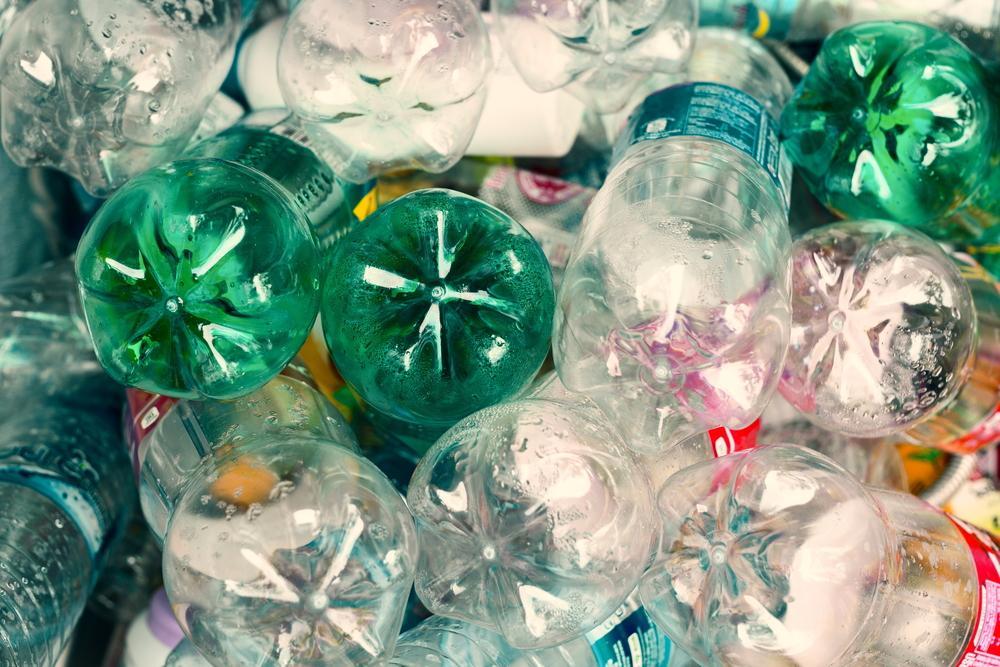
Teerasak Ladnongkhun // Shutterstock
How long it takes 50 common items to decompose
The word “decompose” means “to separate into constituent parts or elements or into simpler compounds,” according to Merriam-Webster. Biodegradation is a similar process, but one that is defined by elements that can be broken down into innocuous parts by the action of living things like worms or microorganisms.
All non-living things are eventually broken down into simple molecules by the elements, microorganisms, and the ravages of time, but some things take significantly longer to decompose than others. When a person throws something in the garbage, the discarded item seems to be out of their life forever. However, the item’s journey to elemental breakdown or decomposition has just begun. Organic materials, like that leftover salad someone couldn’t quite finish, can return to the earth in a matter of days—but the plastic the salad was packaged in can stay put for thousands of years.
It’s important to note that many variables affect decomposition, and the timelines stated in this article are derived from averages or amalgamations based on large samples. Decomposition rates can vary dramatically based on factors like temperature, moisture, exposure to sunlight and the elements, the presence or lack of microorganisms, and whether the object is buried or exposed. Similarly, not all items—plastic bottles, for example—are made in the same way or with the same materials; so, they’re likely to have varied decomposition rates.
While decomposition rates are inherently inexact, it is a topic worth discussing considering that 14 million tons of plastic trash are dumped into the ocean every year. In a world overflowing with discarded things, knowing how long trash will hang around is important.
Stacker looked at how long it takes for some common things that people throw away to decompose. Continue reading on to find out for yourself below.
You may also like: Eco-friendly replacements for 50 plastic items in your life
![]()

Canva
Cigarette butts: 18 months to 10 years
Cigarette butts just might be the most common litter on planet Earth. Smokers consume about 5 trillion cigarettes every year, and a huge percentage of them wind up flicked out of car windows or dropped on the street where they wash into storm drains and eventually into the ocean or other waterways. Cigarette filters contain slowly degrading plastic cellulose acetate, and butts are believed to represent a third of all litter in America; they are the most common litter found on America’s beaches.

Canva
Monofilament fishing line: 600 years
According to the South Carolina Department of Natural Resources, monofilament fishing lines are especially hazardous because they ensnare marine animals and other wildlife during their long, slow road to decomposition. Although monofilament fishing lines can be partially recovered and reused, the process for doing so isn’t widely used.

Gansstock // Shutterstock
Plastic bags: 10–1,000 years
Consumers in recent years have become more aware of the environmental hazard posed by plastic bags, but plastic bags are still one of the most common pollutants. Although they can break down in as little as a decade, the commonly discarded thin plastic bags can endure for as long as 1,000 years.
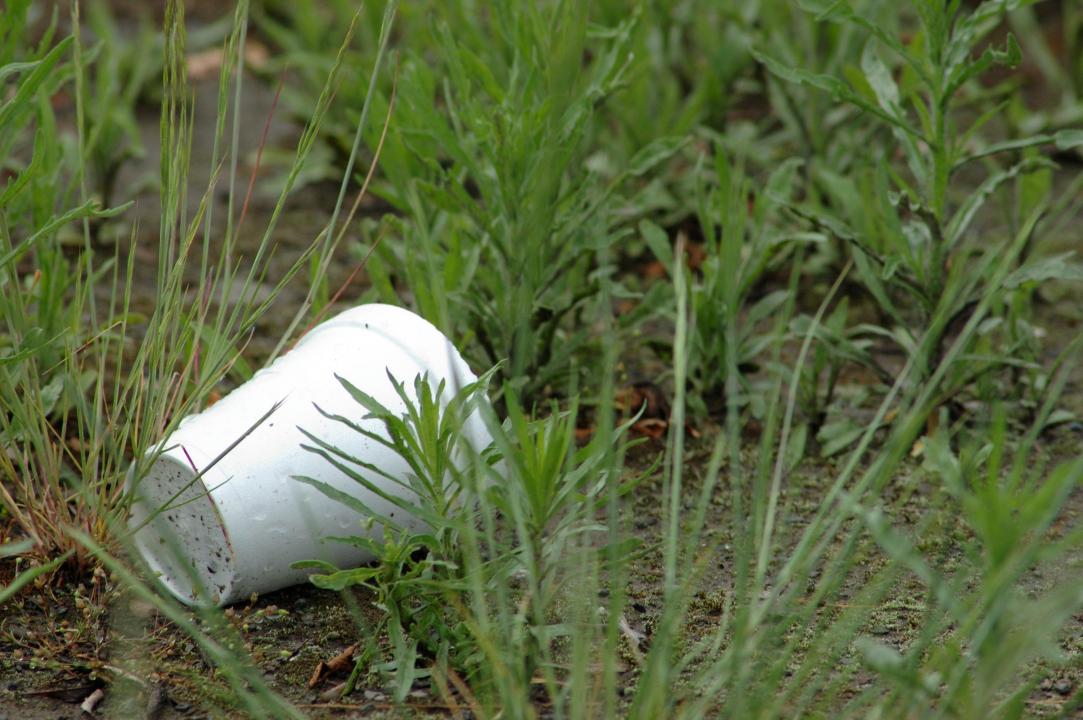
JBFhoto // Shutterstock
Foamed plastic cups: 50 years
Foamed plastic cups decompose faster than most plastic waste. Even so, these plastic cups can be expected to endure for half a century before they finally break down and rejoin nature.
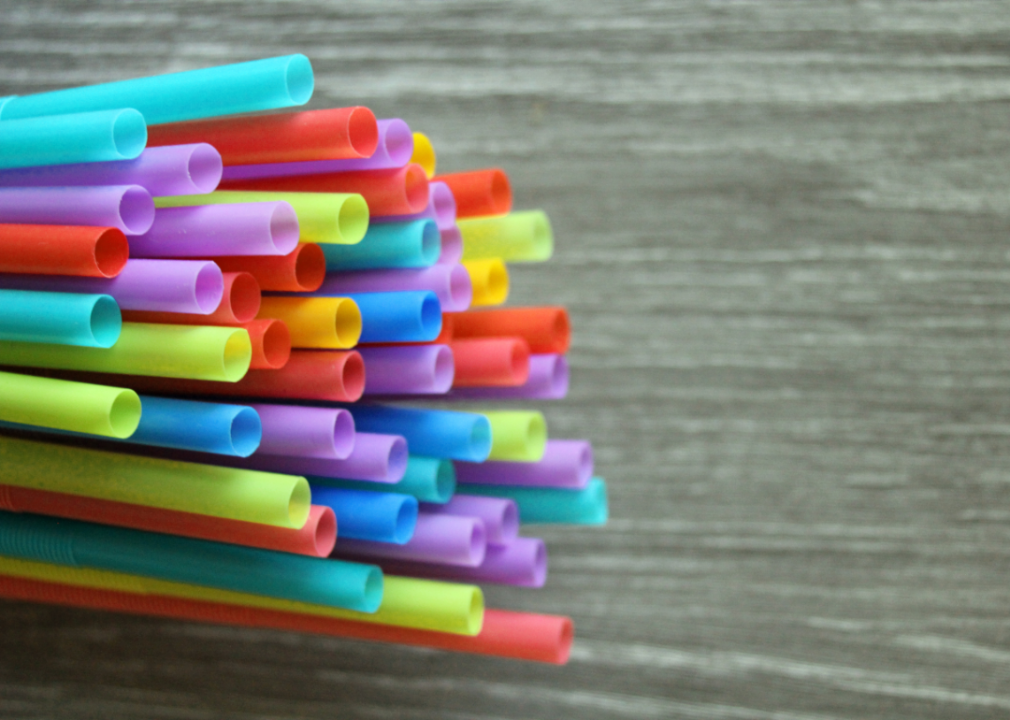
Canva
Straws: 200 years
Since they are essentially unnecessary (for most people) and rarely make it into the recycling bin, plastic straws have become a top target of environmentalists hoping to reduce plastic waste. Americans use millions of straws daily, which can remain on the earth for two centuries after being tossed in the garbage.

siam.pukkato // Shutterstock
Wet wipes: 100 years
Wet wipes are popular for quickly removing makeup, changing babies’ diapers, and making house cleaning a snap. The problem is they contain polyester-based plastic that’s virtually indestructible; they take a century to break down after they’re tossed in the garbage or flushed down the toilet.
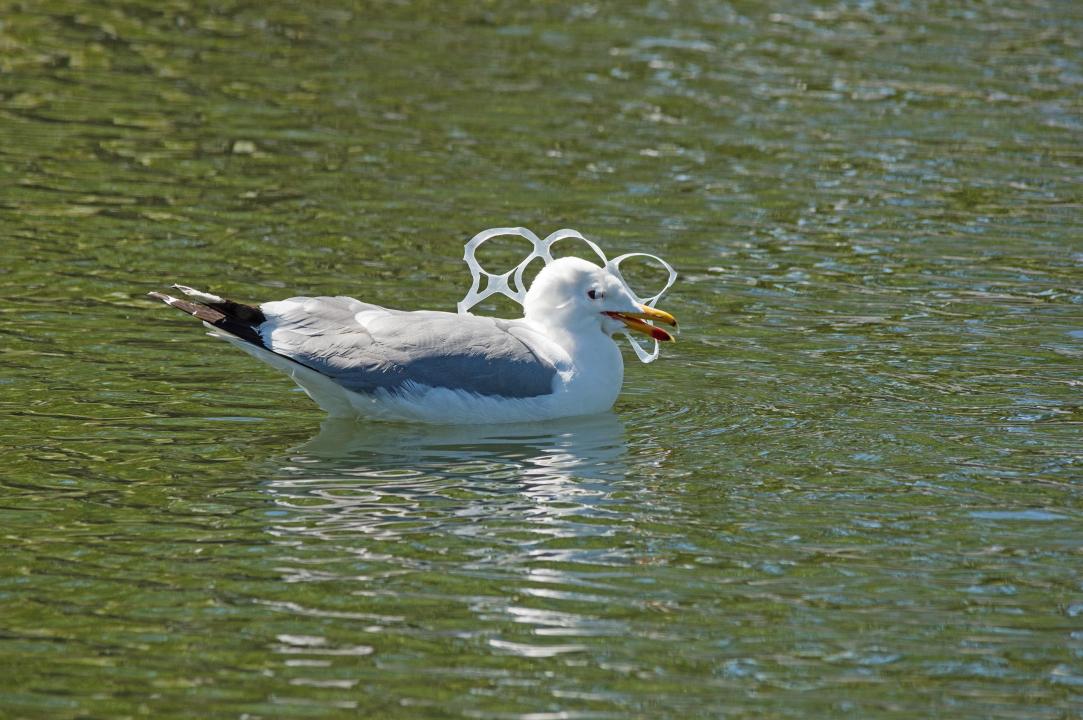
Tom Grundy // Shutterstock
6-pack holders: 450 years
Even when the circles on plastic six-pack holders are cut, they still pose a major threat to wildlife, as they often wind up in the ocean. The thin plastic can holders take nearly half a millennium to break down.

Canva
Tin: 50 years
According to Electronics Recyclers International, tin can take half a century to break down in a landfill. Tin is used to make food cans, but it’s also a common component of computers and other electronics.
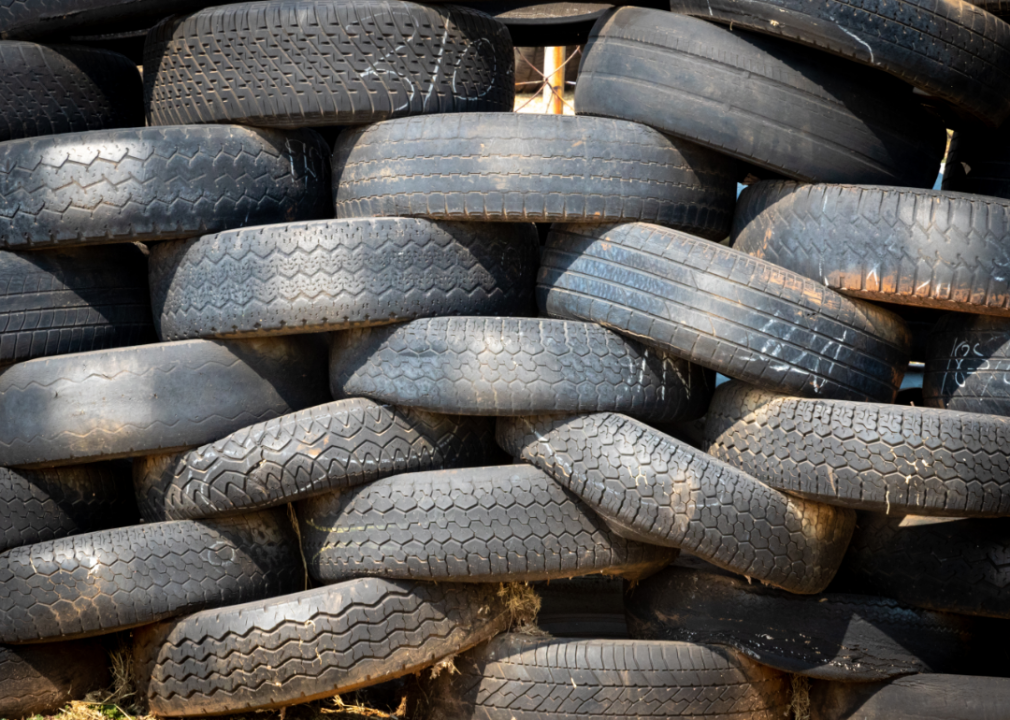
Canva
Tires: 2,000 years
The South Carolina Department of Natural Resources estimates that tires can take two millennia to revert back to nature. They’re also laden with heavy metals like lead, oils, and other pollutants that contaminate the environment as they break down. About 280 million tires are discarded every year in the U.S. alone, of which 30 million are retreated or reused, putting 250 million into scrap.

Canva
Nylon fishing nets: 40 years
Nylon fishing nets can be reused but can’t be fully recycled. When lost or intentionally cut, they present a major hazard to marine animals and other wildlife that become entangled in them both in the water and on the shores.
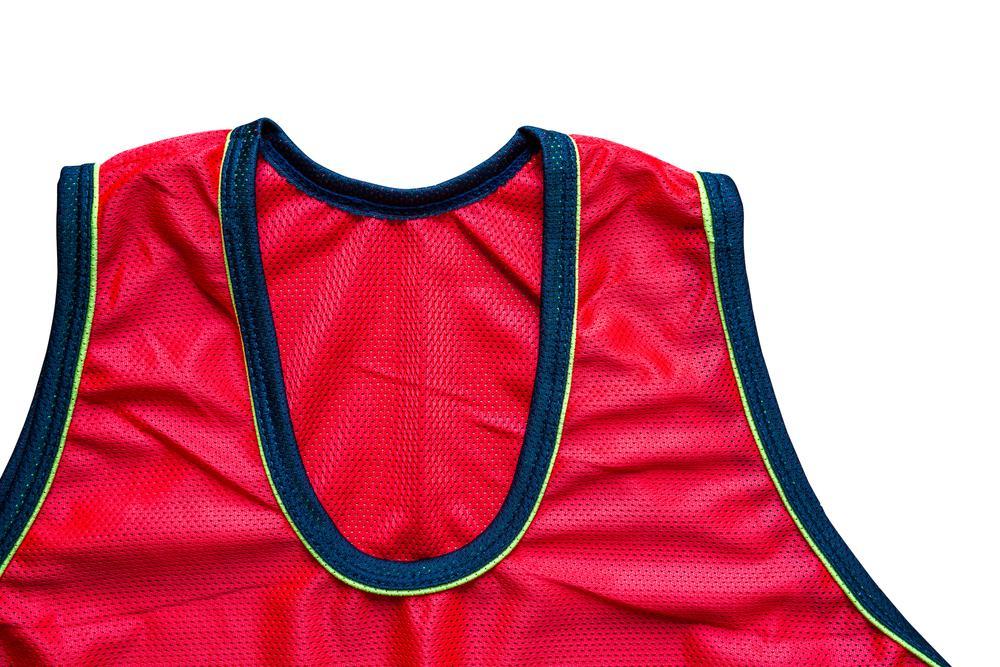
Take Photo // Shutterstock
Nylon fabric: 30–40 years
Nylon fabric is often used for sports equipment like jerseys and mesh shorts, but it’s also found in arts and crafts supplies. Frequently trashed, the material takes decades to decompose.
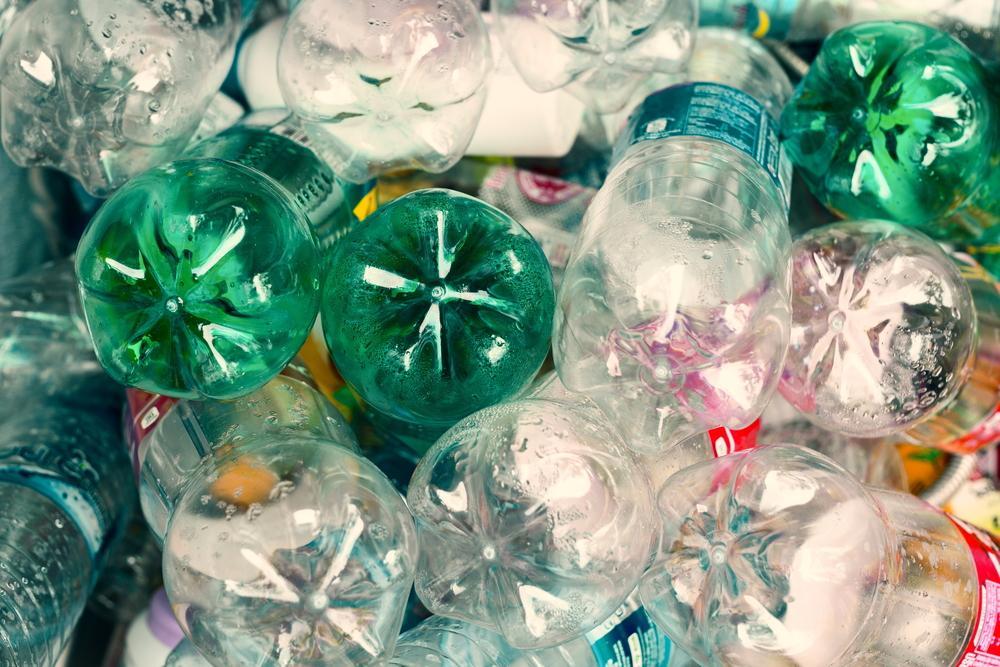
Teerasak Ladnongkhun // Shutterstock
Plastic bottles: 450 years
Pollution from plastic bottles is a global problem, but in the United States alone, more than 60 million bottles are thrown away instead of being recycled every day. They wind up in landfills, incinerators, oceans, parks, streets, and other public spaces. One of the easiest items to recycle, plastic bottles take hundreds of years to decompose.
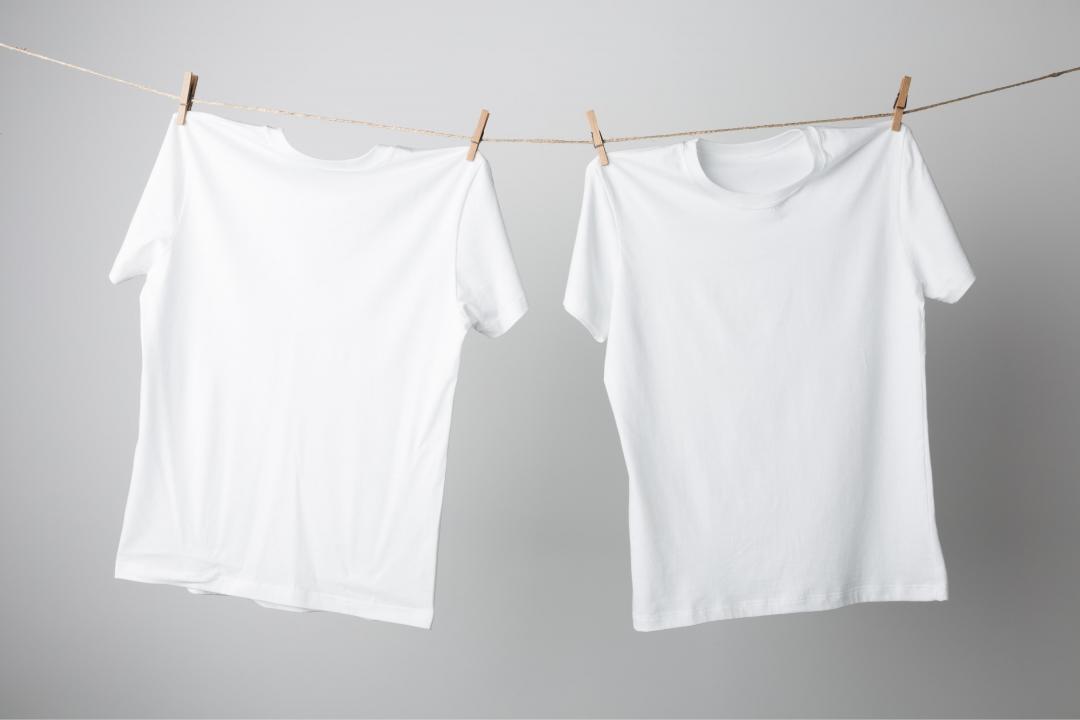
SQS // Shutterstock
Cotton T-shirts: 6 months
T-shirts are one of the most common items in the so-called fashion waste category of pollution, which accumulates when people throw old clothes away instead of donating them, swapping them, or recycling them. The common cotton T-shirt can decompose in six months.

Canva
Wool socks: 1–5 years
Like T-shirts, old wool socks are often presumed to be un-donatable and are therefore tossed in the garbage. Unlike cotton T-shirts, they linger in landfills for up to five years.

Canva
Synthetic fabric: over 100 years
Unlike naturally occurring wool and cotton, synthetic fabrics like lycra and polyester can take centuries to break down. The vast majority of fashion waste can be donated or repurposed into things like dog beds or cleaning rags instead of being thrown in the garbage.
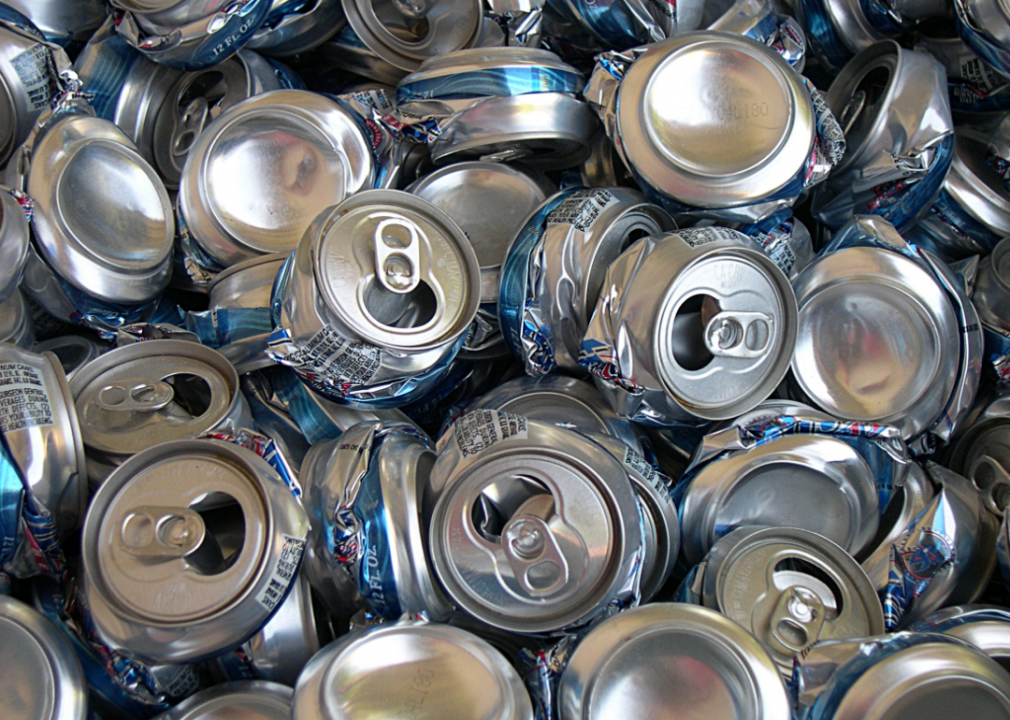
Canva
Aluminum cans: 80–100 years
Aluminum cans only start to break down after 80 to 100 years and will only fully decompose after several centuries. Unlike many other materials, aluminum can be recycled an unlimited number of times, making it one of the most critical and widely repurposed recyclables.

Canva
Vegetables: 5 days to 1 month
Vegetable matter breaks down quickly—in less than a week in some cases. This, along with the excellent nutrient content contained within decaying vegetable matter, makes veggie scraps perfect for composting.

Canva
Orange peels: 6 months
Fruits, particularly highly acidic ones, can take longer than vegetables to break down. Self-contained and easy to eat on the go, oranges account for more scrap waste than most fruits, and they also take longer to decompose.
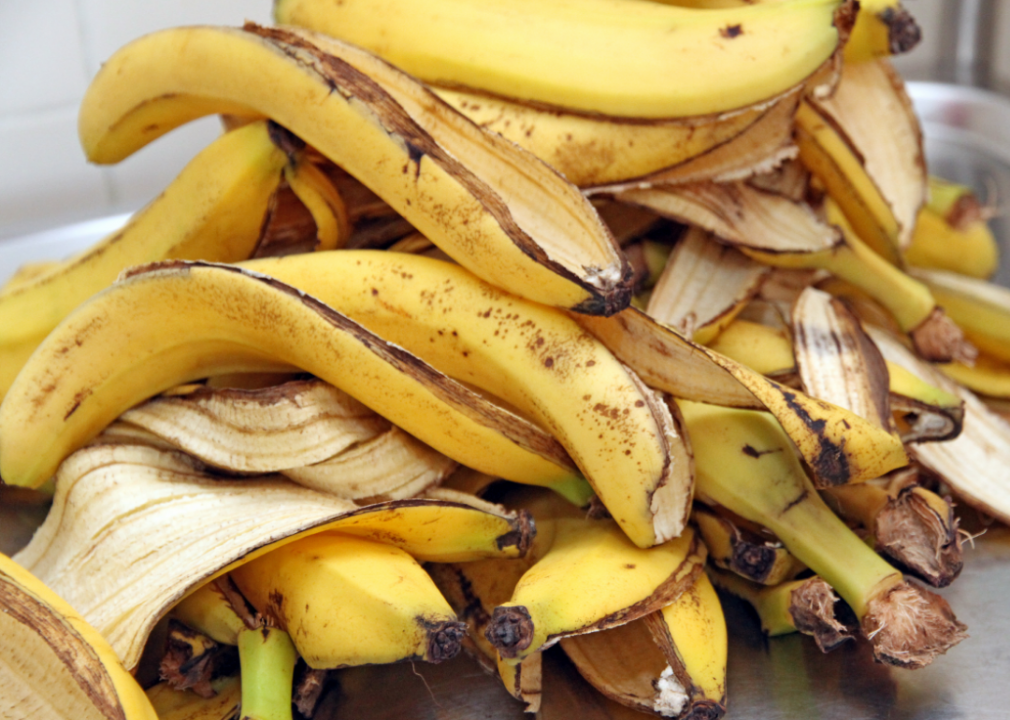
Canva
Banana peels: up to 6 months
Billions of bananas are consumed every year, and like oranges, their peels don’t decompose for several months. Also like oranges, banana peels are perfect for composting or tossing in the garden.

Canva
Hairspray bottles: 200–500 years
Aerosol bottles, like the kind that contain hairspray, are a common sight in landfills across the world. A single bottle can remain intact for a period as long as the Roman Empire before it decomposes.

Canva
Rope: 3–14 months
Common rope can take a little more than a year or a single season to decompose, depending on the materials used to make it. Natural materials like hemp decompose faster than synthetic materials like the kind used to produce climbing rope.

Lex Collection // Shutterstock
Sanitary pads and tampons: over 25 years
About 7 billion tampons and 12 billion sanitary pads are discarded every year in the United States alone, most of which contain plastic in the lining or applicator. The cotton portion decomposes fairly quickly, but the low-density polyethylene plastic takes decades to break down. Never flush plastic applicators, as they can end up in the ocean.
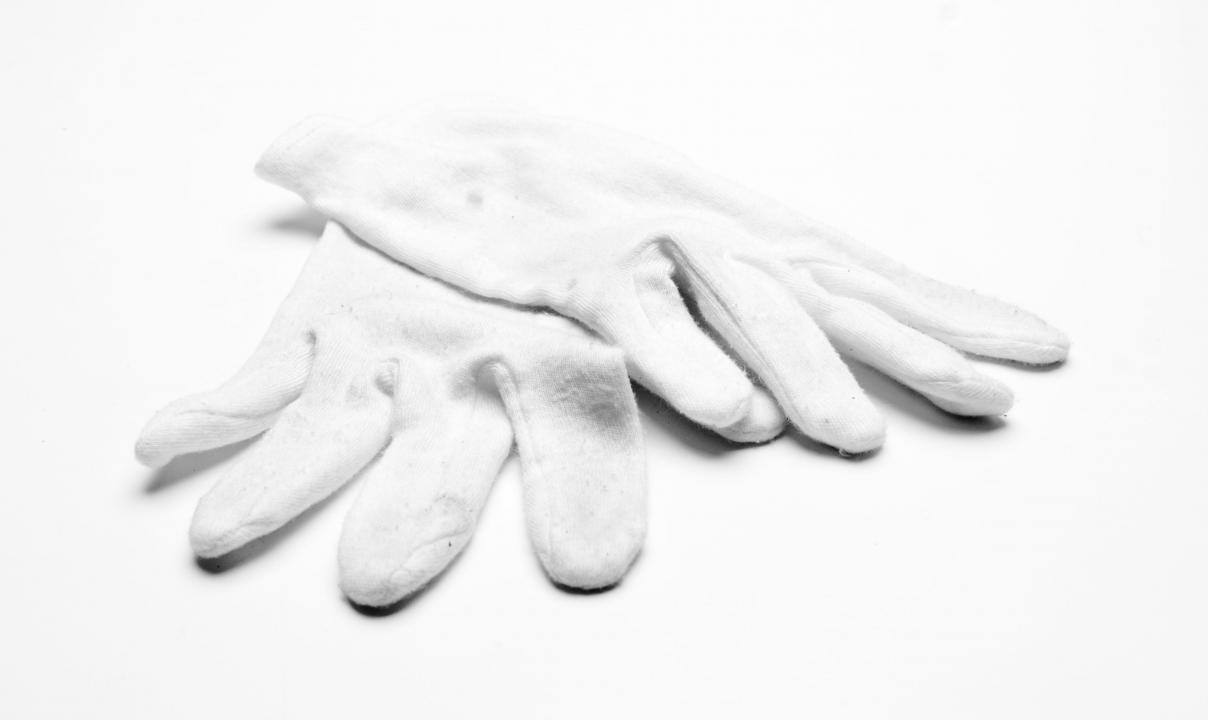
karina // Shutterstock
Cotton gloves: 3 months
Common cotton gloves can break down in as little as three months; however, that rate is contingent on the gloves being 100% cotton. The biodegradation rate increases dramatically with the inclusion of synthetics like those used for waterproofing and insulation.

Malochka Mikalai // Shutterstock
Latex gloves: several months to several years
Latex gloves break down fairly quickly, provided they’re made from natural latex rubber. Like all synthetic rubber, synthesized latex can take years, decades, or longer to decompose.

Canva
Thread: 3–4 months
From furniture to clothing and car interiors to suitcases, threads are everywhere—including in the world’s landfills. Thread is thin and light, but it piles up fast; it also decomposes relatively quickly.

Canva
Paper waste: 2–6 weeks
Paper waste takes only about a month—or a few weeks, give or take—to break down in landfills, but the problem is volume and quantity. Even though it’s one of the most commonly recycled materials, paper waste takes up more space in landfills than most other products.

Canva
Iron: several years
All metal breaks down differently, but iron oxidizes at a fairly rapid rate. People know oxidation as rust—the brownish-colored, flaky stuff that’s often mistakenly blamed for tetanus infections. Over the course of several years, iron will oxidize completely, particularly in coastal areas that are damp and coated with saltwater residue.
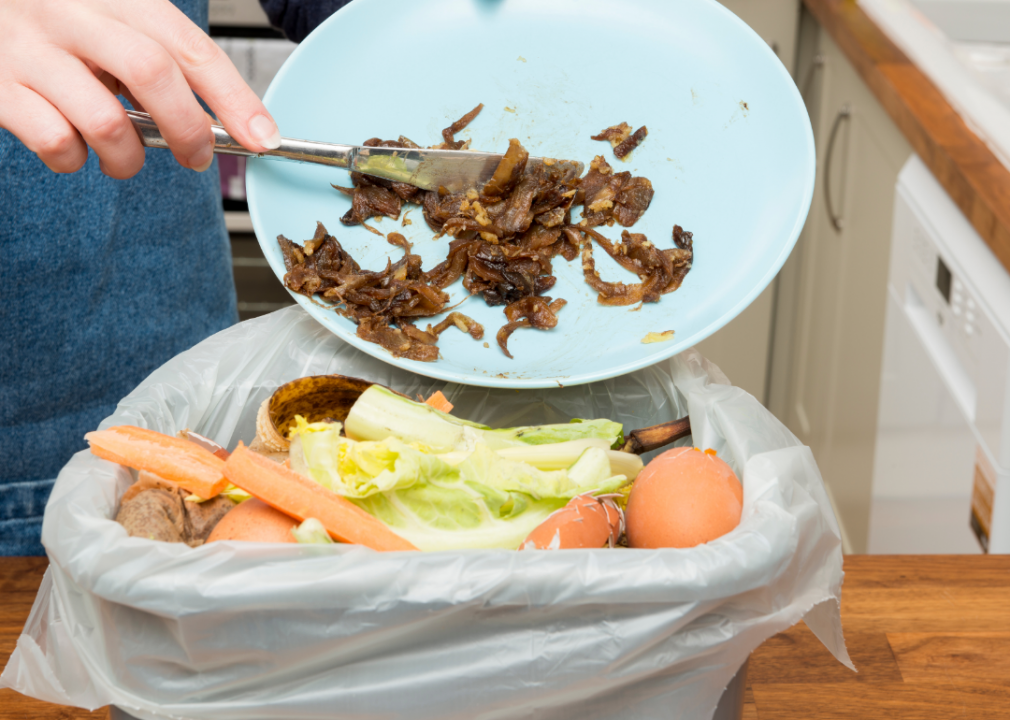
Canva
Food waste: several months to several years
Americans waste 40% of all the food they purchase every year—approximately 119 million tons worth more than $400 billion. Depending on how it’s disposed of and what it contains, food waste can break down in a few months or remain in a state of partial preservation for years.

Canva
Shoes: 25–40 years
Leather shoes take a quarter-century or more to decompose. Like virtually all wearable leather products, shoes contain chemicals, dyes, and additives that can leach into the water and soil as the leather breaks down.
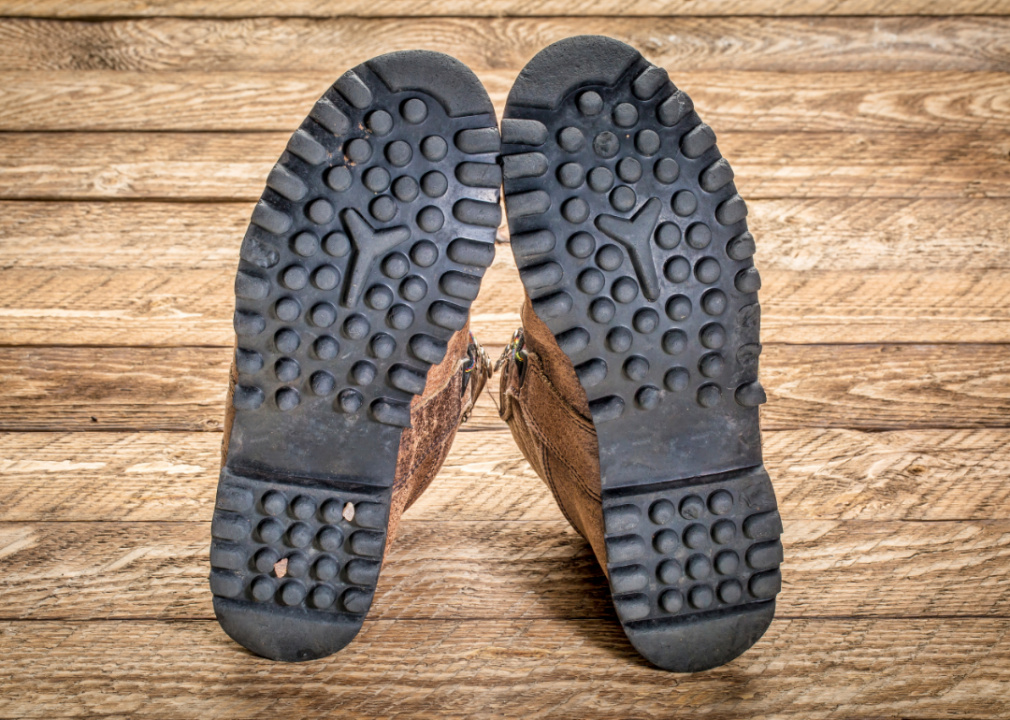
Canva
Rubber boot soles: 50–80 years
Unlike the shoe itself, rubber soles, particularly those fixed to the bottom of heavy boots, can take more than half a century to decompose. Except for a few environmentally conscious brands, virtually all shoe companies use slow-decaying synthetic rubber to make boot soles.

Canva
Cardboard: 2 months
Aside from recycling, cardboard can be composted, used as garden mulch, or repurposed creatively as craft material or pet bedding. It breaks down fairly quickly when it’s exposed, but tightly packed cardboard can endure for years.

Canva
Train tickets: 2 weeks
Many paper train tickets are made from a coated material that contains more than just paper. Millions of train tickets are printed every year, and virtually all of them are thrown away. People can contribute to a cleaner planet by hanging onto their tickets and recycling them at home.

Canva
Canvas: 1 year
Highly durable and versatile, plain-woven canvas is used to make everything from painting surfaces and handbags to clothing and sails. Assuming it’s not treated with chemicals, canvas will break down in about a year, but heavy canvas decomposes slower than light canvas.

Canva
Paper towels: 2–4 weeks
In the U.S. alone, more than 13 billion pounds of paper towels are disposed of every year. Around 51,000 trees would be needed to replace the number of paper towels Americans use every day. Switching to reusable cloth wipes will help lower that statistic.

Canva
Waxed milk cartons: 3 months
Many recycling plants don’t accept paper-plastic hybrid cartons, resulting in millions of tons of packaging waste being dumped in landfills every year. Waxed cartons, used to hold liquids like milk, have a lower packaging-to-product ratio, so they decompose quicker than their non-waxed counterparts.

Aquarius Studio // Shutterstock
Non-waxed cartons: 5 years
Like their waxed counterparts, non-waxed cartons often wind up on the trash heap because consumers believe—correctly or incorrectly, depending on the municipality—that they can’t be recycled. Since they require more materials to produce, non-waxed cartons can linger for five years before they decompose.

Laboko // Shutterstock
Disposable diapers: 500 years
Disposable diapers can’t be recycled for obvious reasons, and the average baby goes through up to 10,000 of them before being potty trained. The third most common consumer item found in landfills, disposable diapers represent 30% of all non-biodegradable waste.

Canva
Rubber bands: up to 1 year
Once thrown away, the sulfur in rubber bands begins to decay, and the rubber bands themselves will begin to break down. They’ll generally be gone in a year, depending on the composition of the rubber, but rubber bands that are stretched break down much faster than those that are not.

Canva
Painted boards: 13 years
Painted boards, like the kind that get thrown away to replace a section of fence, can take more than a dozen years to decompose; however, the paint can degrade much slower, leaching hazardous toxins into the environment.

Addoro // Shutterstock
Lumber: 10–15 years
Lumber is heavy and solid and can take more than a decade to break down. Some lumber, like the kind that is used for outdoor applications, is treated with chemicals that can slow the process of decay and bleed chemicals into the earth.

Yakov Oskanov // Shutterstock
Plywood: 1–3 years
Plywood breaks down much faster than solid lumber, but it’s not a completely natural process. Plywood contains glue that can decompose at a much slower rate than the wood plies it bonds together.
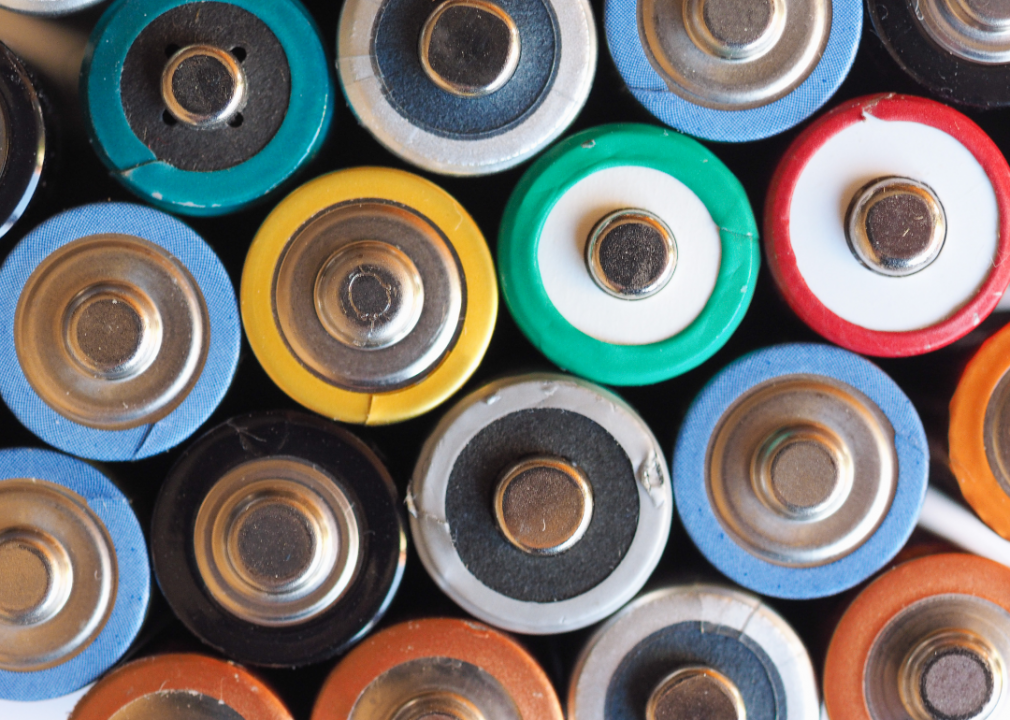
Canva
Batteries: 100 years
Common household alkaline batteries are safe to throw away. However, rechargeable batteries, car batteries, and other industrial types must be disposed of according to federal guidelines.
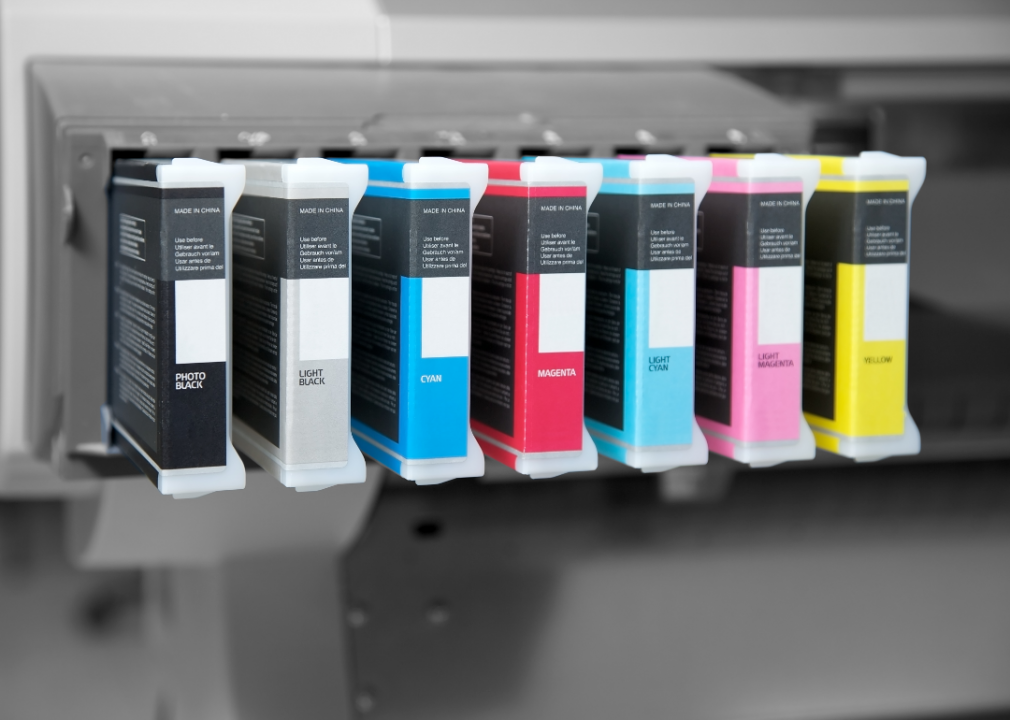
Canva
Ink cartridges: 450–1,000 years
The ink cartridges from printers are a double-edged sword. Not only do they take centuries to decompose, but they also leak toxic chemicals as they break down. Most recycling plants won’t accept them, but major office supply stores encourage customers to return the empty ones for proper disposal.

Canva
Leather: 50 years
Leather comes from animal hides, but it is not a natural product. The tanning process involves treating the hides with a soup of chemicals, particularly if the leather was designed to be water-resistant. That means leather leaches chemicals and other toxins into the earth as it breaks down over half a century.
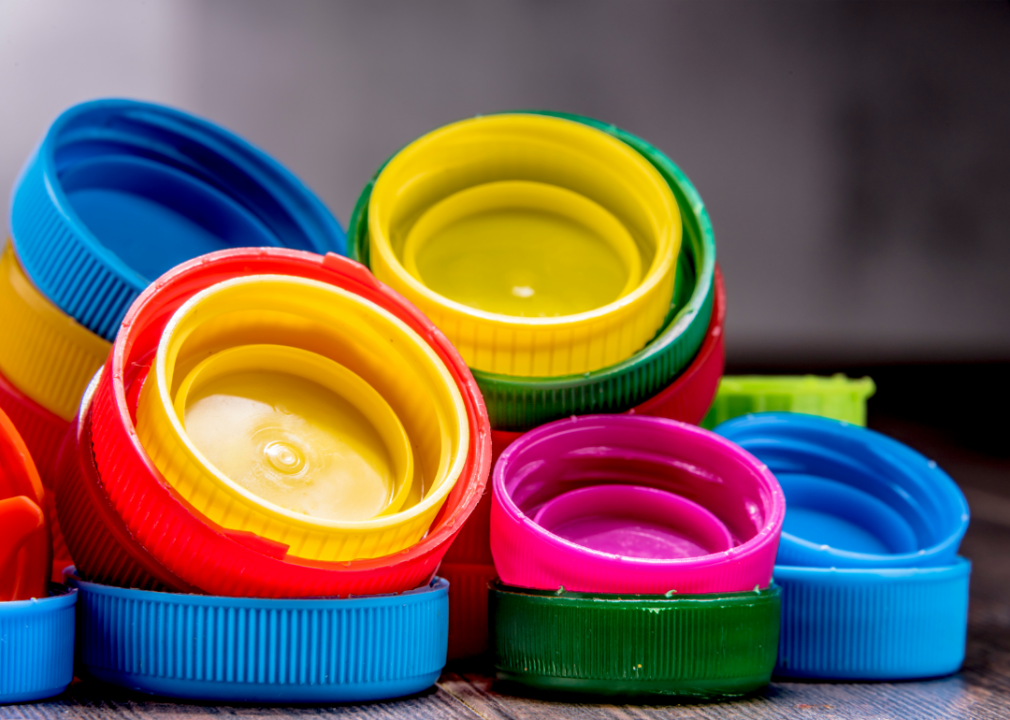
Canva
Plastic bottle caps: 10–500 years
Bottle caps previously had to be separated from plastic bottles before they could be recycled, as caps and bottles are made from two different types of plastic. However, advancements in the industry mean that bottle caps can now be kept on for recycling. Bottle caps are made from high-density polyethylene and polypropylene, which can now be recycled.
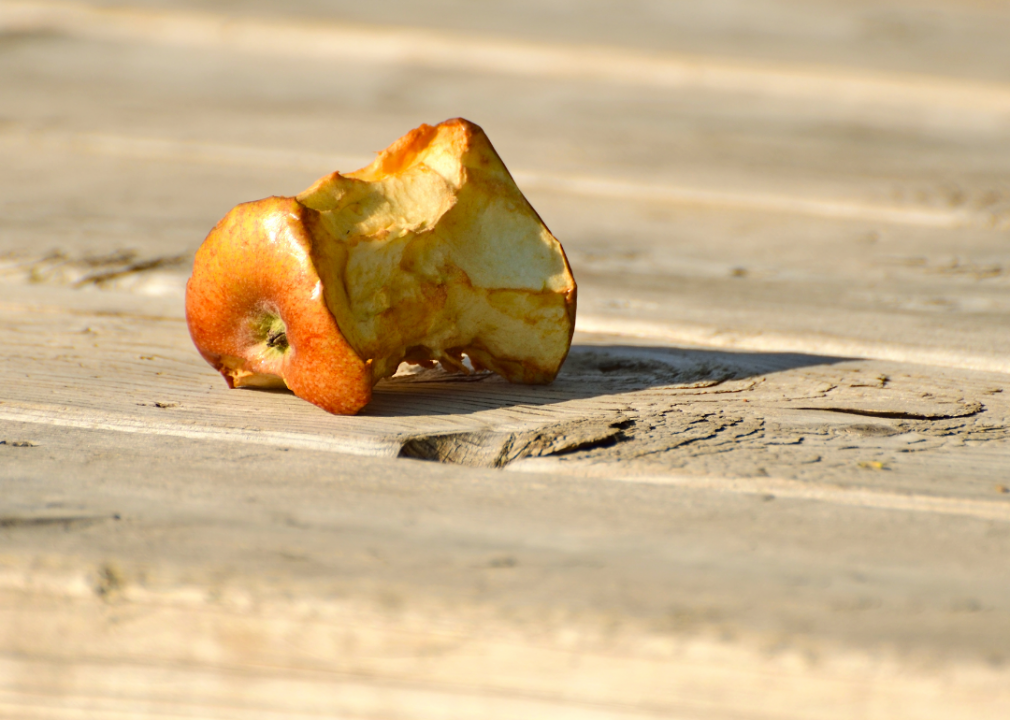
Canva
Apple cores: 2 months
Apple cores don’t take quite as long as banana peels and oranges to decompose. However, they remain intact longer than denser fruits and vegetables and have higher water content. Once tossed into the garbage, an apple core takes about eight weeks to biodegrade.

Africa Studio // Shutterstock
Polyurethane seat cushions: 1,000 years
Polyurethane cushions, commonly found in car seats and home furniture, are made by injecting a foam mixture into molds; however, once they hit the garbage heap, they remain as is for centuries.

xpixel // Shutterstock
Glass: over 1 million years
Since it breaks so easily, people tend to think of glass as fragile, but it’s actually one of the most durable materials on Earth, at least in terms of decomposition. Relics from the earliest days of glass-making in 2000 B.C. Egypt still exist, and experts theorize that a glass bottle would take 1 million years or more to fully decompose on its own.
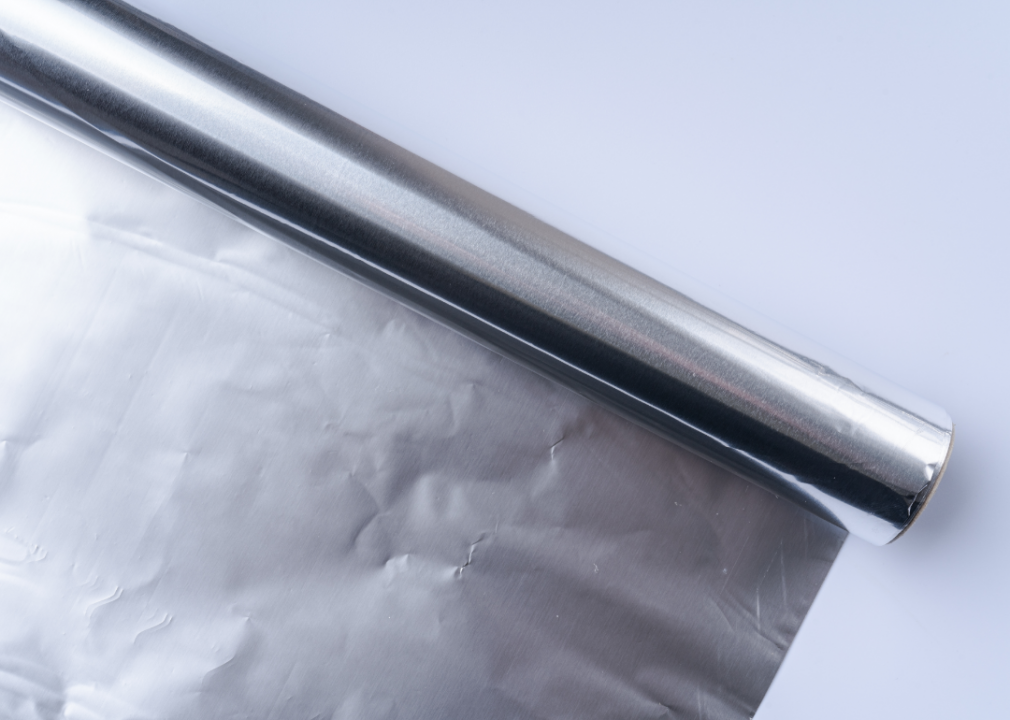
Canva
Aluminum foil: never
Americans throw away enough aluminum foil every year to build a fleet of aircraft, and that’s a sad statistic for two reasons: First, aluminum foil is easily and completely recyclable. Secondly, these thin, foldable, metallic sheets never fully break down.
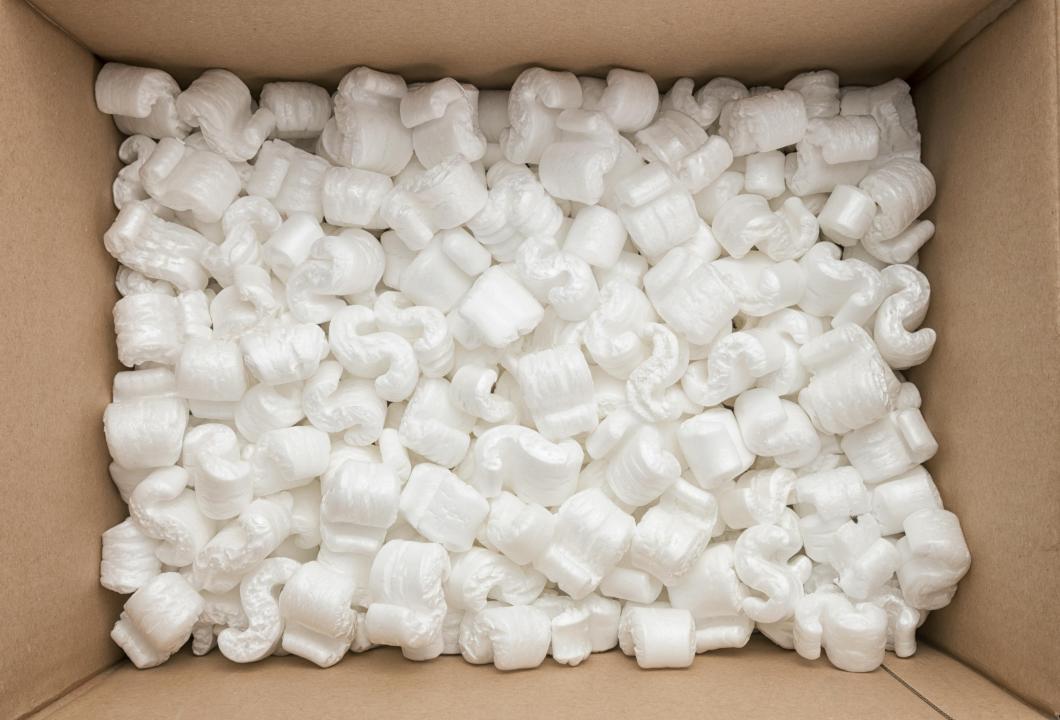
r.classen // Shutterstock
Styrofoam: never
In the world of landfill-clogging waste from America’s throwaway culture, there is Styrofoam, and there’s everything else. More than 3 million tons of polystyrene products are produced in the U.S. every year, the vast majority of which are one-and-done, single-use throwaway products. Styrofoam is efficient and inexpensive, but making it requires the use of fossil fuels and dangerous chemicals. Virtually no communities allow it to be included in recycling. It is not biodegradable, so it never decomposes. Americans throw away 25 billion Styrofoam coffee cups alone every year—enough to circle the earth 436 times.



